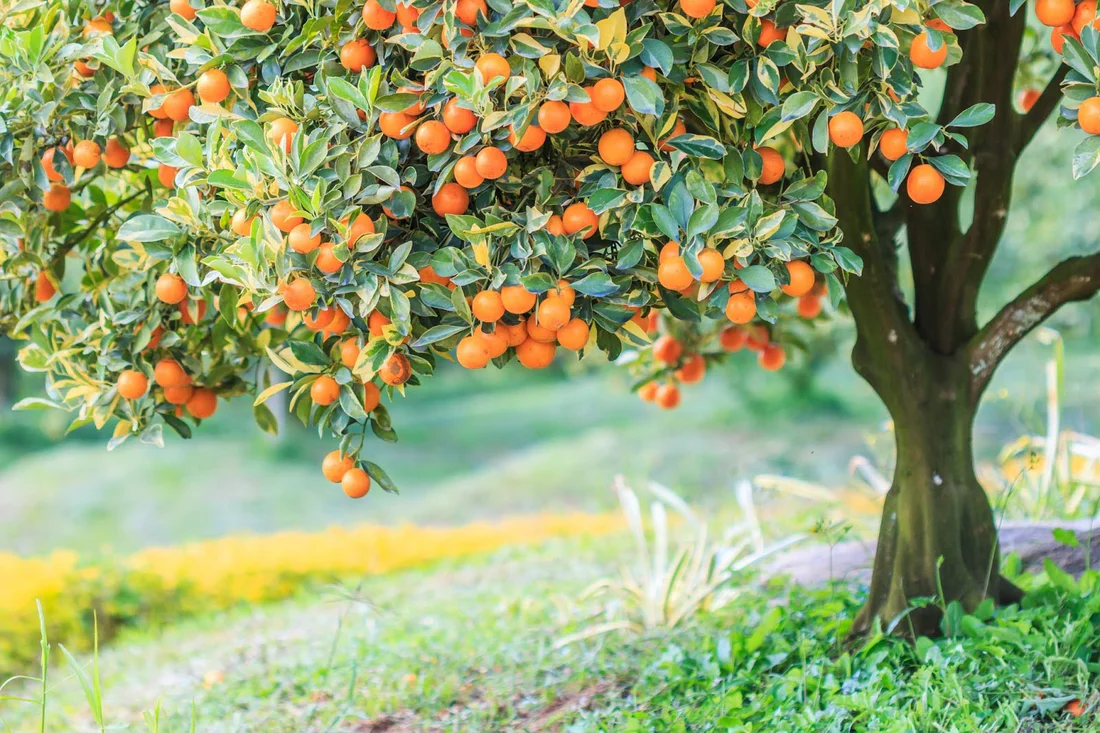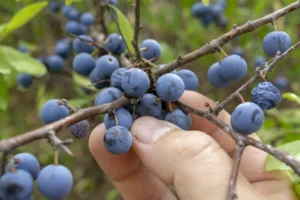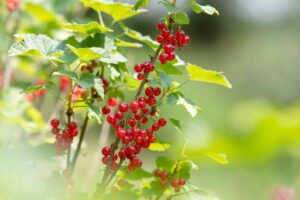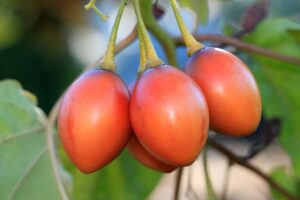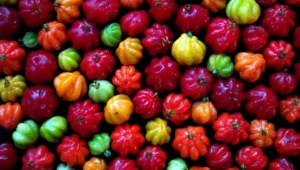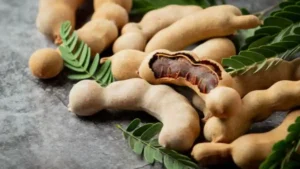How to Grow and Care for Ugli Fruit: Complete Guide
Are you looking to add an exotic and delicious citrus variety to your home garden? The Ugli fruit (Citrus reticulata × paradisi) might be just what you need. Despite its unfortunate name, this Jamaican tangelo hybrid offers a sweet-tart flavor that combines the best qualities of its parent fruits: grapefruit, orange, and tangerine.
In this comprehensive guide, you’ll learn everything you need to know about growing and caring for Ugli fruit trees in different environments across the United States, from indoor containers to outdoor gardens.
What Is Ugli Fruit?
Before diving into cultivation methods, it’s important to understand what makes this citrus variety unique. Ugli fruit, also known as uniq fruit, is a natural tangelo hybrid originally discovered in Jamaica in the early 1900s. Despite its rough, wrinkled, and sometimes unattractive exterior (hence the name “ugli”), the fruit offers a juicy, sweet interior with less bitterness than grapefruit and the easy-peeling qualities of tangerines.
According to the USDA Agricultural Research Service, citrus hybrids like the Ugli fruit represent important genetic diversity in citrus cultivation that can contribute to disease resistance and climate adaptability.
Key Characteristics of Ugli Fruit
- Appearance: Large, wrinkled, greenish-yellow to orange skin
- Size: Typically 4-6 inches in diameter
- Flavor: Sweet-tart with less bitterness than grapefruit
- Growing Zones: USDA Hardiness Zones 9-11 for outdoor cultivation
- Origin: Jamaica
- Harvest Season: Winter to early spring (December through April)
Growing Ugli Fruit From Seed
While professional growers typically use grafting to produce consistent Ugli fruit trees, you can experiment with growing from seed as a fun project. Keep in mind that trees grown from seed:
- Take longer to produce fruit (5-7 years versus 2-3 for grafted trees)
- May not produce fruit identical to the parent
- Still make attractive ornamental plants
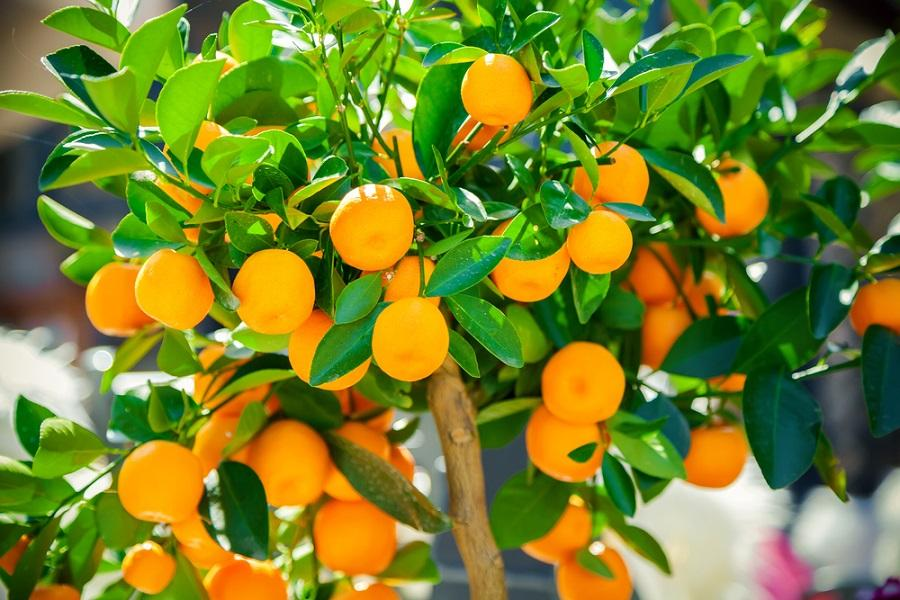
Step-by-Step Seed Planting Process
- Extract and clean seeds: Remove seeds from a fresh Ugli fruit and rinse thoroughly to remove any pulp.
- Test for viability: Place seeds in a cup of water – viable seeds will sink.
- Optional pre-germination: Wrap seeds in a damp paper towel inside a sealed plastic bag for 1-2 weeks until they sprout.
- Prepare potting mix: Use a well-draining citrus soil mix or combine equal parts potting soil, perlite, and coconut coir.
- Plant seeds: Place seeds about ½ inch deep in small pots or seedling trays.
- Maintain moisture and warmth: Keep soil consistently moist (not soggy) and maintain temperatures between 70-80°F.
- Watch for germination: Expect seedlings to emerge within 2-4 weeks.
Growing Ugli Fruit Indoors
For gardeners in colder climates (Zones 8 and below), growing Ugli fruit indoors is your best option. Even in warmer regions, starting your tree indoors gives you greater control over early growth conditions.
Indoor Growing Requirements
Container Selection:
- Choose a pot 2-3 times larger than the root ball
- Ensure ample drainage holes
- Consider fabric pots for better aeration
- Start with a 5-gallon container, eventually upgrading to 15-20 gallons as the tree matures
Light Requirements:
- Position near the sunniest south-facing window available
- Provide 8-12 hours of bright light daily
- Supplement with grow lights during winter months
- Rotate the plant regularly to ensure even growth
Temperature and Humidity:
- Maintain temperatures between 65-85°F
- Avoid placing near heating vents or air conditioners
- Use a humidity tray or room humidifier to maintain 40-60% humidity
- Protect from cold drafts
Watering Schedule:
- Allow the top 1-2 inches of soil to dry between waterings
- Reduce watering in winter months
- Use room temperature water to avoid shocking the roots
- Water thoroughly until it drains from the bottom
Growing Ugli Fruit in Garden Pots Outdoors
Container growing outdoors combines the benefits of controlled growing conditions with natural sunlight and seasonal variations.
Outdoor Container Growing Tips
Seasonal Care:
- Move potted trees outdoors after all danger of frost has passed
- Gradually acclimate the plant to outdoor conditions over 1-2 weeks
- Bring indoors when temperatures drop below 40°F
Positioning:
- Place in a location that receives 6-8 hours of direct sunlight
- Protect from harsh afternoon sun in extremely hot climates
- Ensure good air circulation to reduce pest and disease issues
Container Considerations:
- Use light-colored containers to keep root temperatures moderate
- Consider placing pots on wheels for easy relocation
- Insulate pots during unexpected cold snaps with bubble wrap or frost cloth
Growing Ugli Fruit in Ground (Outdoor Gardens)
For gardeners in USDA Zones 9-11, growing Ugli fruit trees directly in the ground is possible and often yields the largest harvests.
Site Selection and Preparation
Optimal Location:
- Choose a sunny spot with 8+ hours of direct sunlight
- Provide protection from strong winds
- Allow 12-15 feet of space between trees and structures
- Consider southern exposure for maximum light in northern areas
Soil Requirements:
- Well-draining soil with pH between 5.5 and 6.5
- Incorporate 2-3 inches of compost into the planting area
- Consider raised beds in areas with poor drainage
- Test soil through your local extension service before planting
Planting Process:
- Dig a hole twice as wide and slightly deeper than the root ball
- Mix native soil with quality compost at a 50/50 ratio
- Position the tree so the graft union remains above soil level
- Backfill carefully, tamping down to remove air pockets
- Create a water basin around the tree’s drip line
- Apply 2-3 inches of mulch, keeping it away from the trunk
Fertilizing Ugli Fruit Trees
Proper nutrition is essential for healthy growth and abundant fruiting. Ugli fruit trees have specific nutritional needs that change as they mature.
Fertilizer Requirements by Growth Stage
| Growth Stage | Fertilizer Type | Application Rate | Frequency | Key Nutrients |
|---|---|---|---|---|
| Seedling (0-1 year) | Low-nitrogen organic | ¼ cup per application | Every 6-8 weeks during growing season | N-P-K: 5-5-5 |
| Young Tree (1-2 years) | Balanced citrus | ½ cup per application | Every 4-6 weeks during growing season | N-P-K: 8-8-8 |
| Pre-fruiting (3-4 years) | Higher phosphorus | 1 cup per application | Early spring, early summer, early fall | N-P-K: 6-10-8 |
| Mature Fruiting (5+ years) | Specialized citrus | According to package for tree size | 3-4 times per year | N-P-K: 8-3-9 plus micronutrients |
Important Notes:
- Always water thoroughly after fertilizing
- Reduce applications by half for container-grown trees
- Watch for yellowing leaves (potential nitrogen deficiency) or leaf burn (over-fertilization)
- Consider supplementing with Epsom salts (1 tbsp per gallon of water) twice yearly to provide magnesium
Watering Requirements
Consistent moisture is crucial for Ugli fruit development, but overwatering can lead to root rot and other issues.
Watering Guidelines
Newly Planted Trees:
- Water deeply every 2-3 days for the first two weeks
- Extend to twice weekly for the next month
- Gradually transition to regular schedule as roots establish
Established Trees:
- Deep watering once weekly during growing season
- Adjust based on rainfall, temperature, and soil conditions
- Reduce to every 2-3 weeks during dormant period
Container Plants:
- Monitor more frequently as containers dry faster
- Insert finger 2 inches into soil to test moisture
- Water when soil feels dry at this depth
Pruning and Training Ugli Fruit Trees
Regular pruning improves air circulation, maintains manageable size, and increases fruit production.
Pruning Guidelines
When to Prune:
- Major pruning in late winter/early spring before new growth
- Light maintenance pruning throughout growing season
- Never prune during extreme heat or cold
What to Remove:
- Dead or diseased branches (anytime)
- Crossing or rubbing branches
- Inward-growing branches
- Water sprouts and suckers
- Excessive vertical growth
Training Young Trees:
- Establish a strong central leader with 3-5 main scaffold branches
- Prune to create an open, vase-like structure
- Use wooden stakes or soft ties to guide growth direction
- Remove fruit in first 2-3 years to focus energy on root and branch development
Pest and Disease Management
Ugli fruit trees can face several challenges from pests and diseases, especially in humid regions.
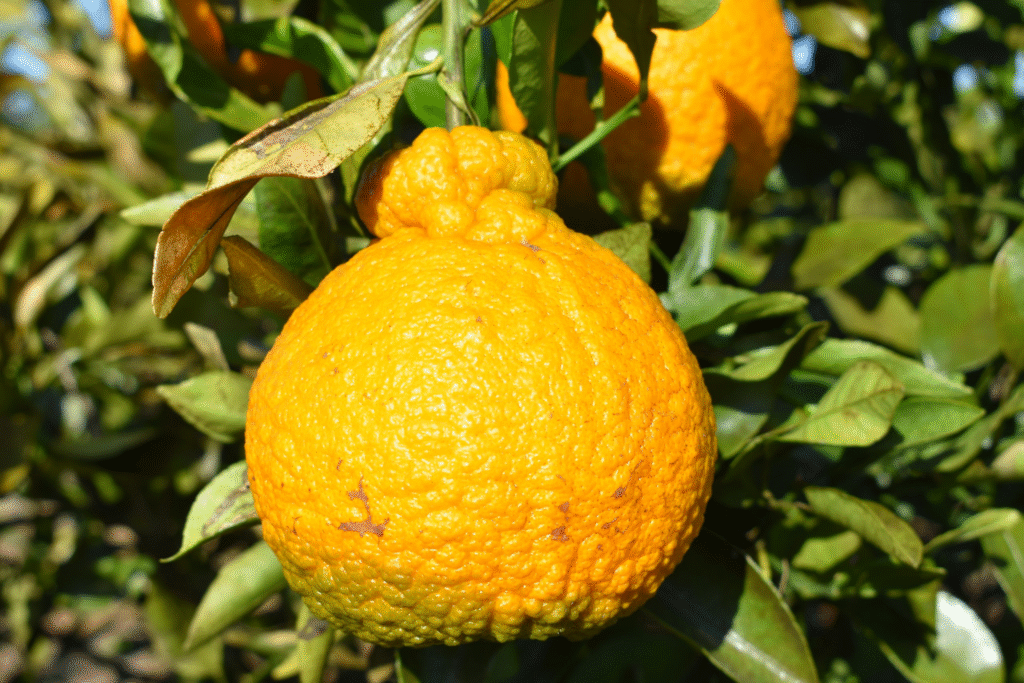
Common Pests
Citrus Leaf Miner:
- Symptoms: Silvery trails on leaves, distorted new growth
- Management: Neem oil applications, avoid excessive pruning of new growth
- Prevention: Beneficial insects like parasitic wasps
Scale Insects:
- Symptoms: Small bumps on branches and leaves, sticky honeydew
- Management: Horticultural oil sprays, scrubbing with soft brush
- Prevention: Regular inspection, especially under leaves
Aphids:
- Symptoms: Curled leaves, sticky residue, ant activity
- Management: Strong water spray, insecticidal soap
- Prevention: Encourage ladybugs and lacewings
Common Diseases
Citrus Canker:
- Symptoms: Raised corky lesions on fruits, leaves, and twigs
- Management: Remove infected parts, copper-based fungicides
- Prevention: Avoid overhead watering, ensure good air circulation
Root Rot:
- Symptoms: Yellowing leaves, wilting despite adequate water
- Management: Improve drainage, reduce watering frequency
- Prevention: Well-draining soil, appropriate container size
Greening Disease (HLB):
- Symptoms: Mottled leaves, lopsided fruit, premature fruit drop
- Management: No cure; remove infected trees to prevent spread
- Prevention: Source clean nursery stock, control Asian citrus psyllid vector
According to the USDA Animal and Plant Health Inspection Service, citrus greening remains one of the most serious threats to citrus production in the United States, making preventative practices especially important.
Harvesting and Using Ugli Fruit
The reward for your care and patience comes at harvest time, typically 2-3 years after planting for grafted trees and 5-7 years for seed-grown specimens.
Harvesting Guidelines
When to Harvest:
- Fruits typically mature December through April
- Look for skin color change from green to yellow-orange
- Slight give when gently squeezed
- Full size development (4-6 inches diameter)
Harvesting Technique:
- Use sharp, clean pruning shears or scissors
- Cut stem close to the fruit, leaving a small stub
- Handle gently to avoid bruising
- Harvest in morning hours for best flavor
Storage and Use
Storage Methods:
- Room temperature: 1-2 weeks
- Refrigerator: 2-4 weeks
- Cool, dry place: up to 3 weeks
Culinary Uses:
- Fresh eating (segmented like grapefruit)
- Freshly squeezed juice
- Citrus salads
- Marmalades and preserves
- Zest for baking and cooking
US Market for Ugli Fruit
While still considered a specialty citrus, Ugli fruit has found increasing popularity in U.S. markets, particularly among health-conscious consumers and those seeking unusual fruits.
Market Trends
- Growing interest in exotic and heirloom citrus varieties
- Increasing availability in specialty grocery stores and farmers markets
- Premium pricing compared to common citrus ($2-5 per fruit)
- Peak availability January through March
- Growing popularity in the farm-to-table restaurant movement
Health Benefits Driving Market Growth
- High vitamin C content (approximately 70% of daily value per fruit)
- Good source of dietary fiber
- Contains beneficial flavonoids and antioxidants
- Lower in calories than many snack options
- Naturally sweet with no added sugars
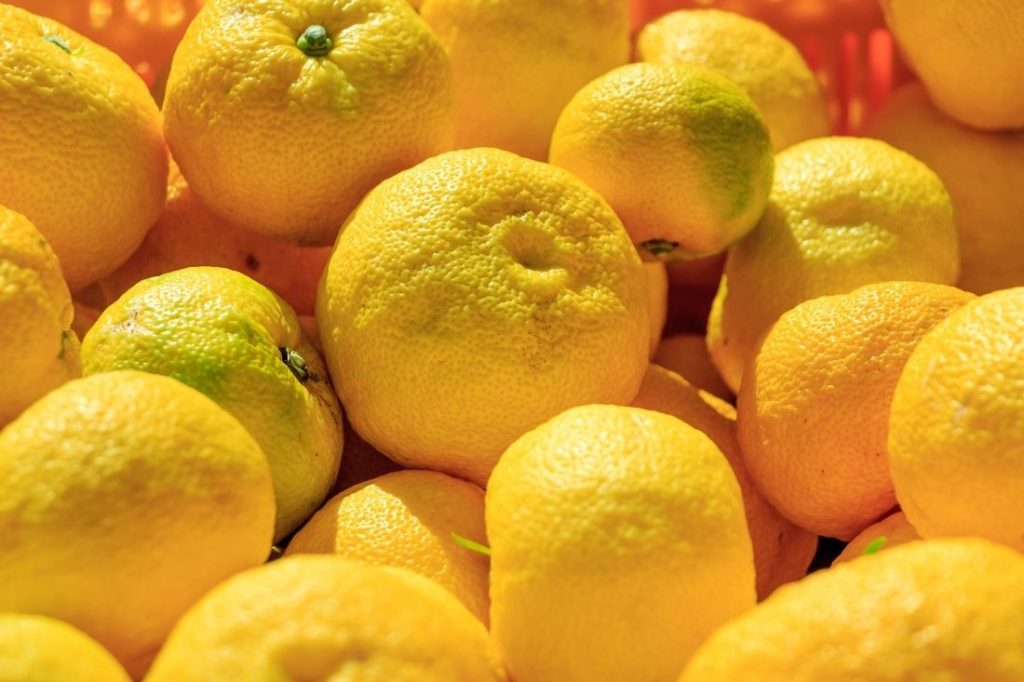
Troubleshooting Common Issues
Even with proper care, you may encounter some challenges when growing Ugli fruit.
Leaf Problems
Yellow Leaves:
- Potential causes: Nutrient deficiency, overwatering, poor drainage
- Solutions: Adjust fertilizer, check drainage, allow soil to dry between waterings
Leaf Drop:
- Potential causes: Temperature stress, transplant shock, dramatic light changes
- Solutions: Maintain consistent environment, gradual hardening off, stable light conditions
Curled Leaves:
- Potential causes: Pests (especially aphids), water stress, heat stress
- Solutions: Inspect for pests, adjust watering schedule, provide afternoon shade in hot regions
Fruiting Issues
No Flowers or Fruit:
- Potential causes: Insufficient maturity, improper pruning, inadequate light, imbalanced fertilizer
- Solutions: Patience (trees need 2-7 years before fruiting), adjust pruning practices, increase light exposure
Fruit Drop:
- Potential causes: Water stress, nutrient deficiency, excessive fruit set
- Solutions: Consistent watering, appropriate fertilization, thin excess fruit in early development
Small or Malformed Fruit:
- Potential causes: Insufficient pollination, pest damage, nutrient deficiencies
- Solutions: Hand pollination, pest management, balanced fertilizer with micronutrients
Conclusion
Growing Ugli fruit can be a rewarding experience for gardeners willing to provide the specific care these unique citrus trees require. Whether you’re cultivating them indoors in containers, in outdoor pots, or directly in your garden, the sweet-tart flavor of homegrown Ugli fruit makes the effort worthwhile.
Remember that patience is key—particularly if growing from seed—but with proper attention to watering, fertilizing, pest management, and pruning, you can enjoy these distinctive fruits right from your own garden. The unique appearance and delicious taste of Ugli fruit make it not just a conversation piece but also a valuable addition to your culinary repertoire.
For additional information about citrus cultivation practices and regional adaptations, consider connecting with your local USDA Cooperative Extension Service, which can provide location-specific guidance tailored to your growing conditions.
